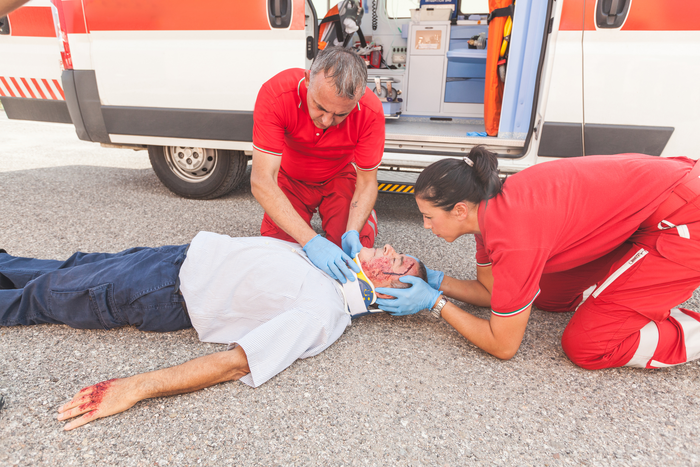
Neurological emergencies come in many forms, many of them life-threatening. Any pathological process or traumatic injury that impacts the patient's neurological system can have devastating consequences: paralysis, brain damage, or even death. As an emergency provider, you must be prepared to support your patient's vital functions. This includes ensuring adequate circulation—by maintaining blood pressure and pulse—along with oxygenation, through oxygen therapy, intubation, and, most importantly, suction.
Suction can mean the difference between life and death for your patient. In a neurological emergency, your patient's ability to clear their airway or maintain its patency may be severely compromised. So, let's examine three neurological emergencies that have a high likelihood of requiring suction.
Stroke
We know that strokes are either hemorrhagic (bleeding in the brain) or ischemic (caused from a clot) in nature. Stroke is the fifth leading cause of death in the U.S. Both disrupt blood flow and can cause pressure to build up in surrounding brain tissue. The extent of neurological deficit resulting from such conditions depends on the location and severity of the stroke. And many can place the patient at risk for airway compromise.
Airway compromise in stroke can result from the inability to swallow effectively, cough, or control physical movement. In severe cases, the respiratory drive in the brain can be affected, and the patient will be dependent upon artificial ventilation. In any of these situations, you must be sure to keep the portable suction unit close by to ensure you maintain the patient's airway patency.
Spinal Cord Injury
Spinal cord injuries can result from any type of trauma: blunt force, such as assaults or blast injuries; penetrating, such as gunshot wounds; or shearing injuries, which can result from deceleration incidents. The higher the injury on the cord, the greater the extent of paralysis or catastrophic injury. And in the case of neurogenic shock, the entire body can be affected.
Any of these incidents can interrupt airway patency, requiring rapid intervention. And one of the most important airway tools available is your portable suction unit. Because spinal cord injuries can result from such a wide range of conditions, it is imperative to carry your suction unit to EVERY trauma call! Don't be caught short-handed. Your patient will suffer.
Head Injury
Like spinal cord injuries, head injuries can result from a range of trauma. Trauma to the brain can result in bleeding, swelling, and fractures, all of which can impact airway patency. If the patient is unconscious, they will be unable to protect their airway, which requires a quick hand with the suction unit. The patient's airway can rapidly fill with phlegm, vomit, and blood, so keep the portable suction unit handy and in working order!
Neurological emergencies can be challenging to manage. They can affect numerous bodily systems, none more critical than the respiratory. Whether it's a stroke, an injury to the spinal cord, a head injury, or a pathological process such as meningitis, these emergencies require early recognition, thorough assessments, and expedient intervention. And one of your most valuable tools is your portable suction unit.
Editor's Note: This blog was originally published in June, 2017. It has been re-published with additional up to date content.
















